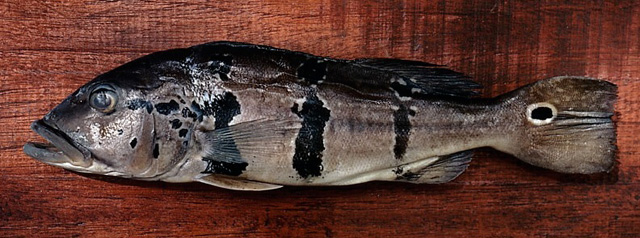|
Diagnosis: Similar to C. jariina, C. pinima, C. temensis, and C. thyrorus in having 4 horizontal rows of light spots along the side in subadults and large females, and prominent black, light margined vertical bars or blotches in adults. The scales in E1 row ca 100-110, exceptionally 95-114 (vs. 77-90 in C. thyrorus. The lateral line is nearly always discontinuous (vs. usually continuous in C. temensis and C. thyrorus. Vertical bars of breeding specimens are ocellated and modified, typically with small blotch close to dorsal fin base, below that ocellated vertical bars, or bar 1 with two separate or contiguous blotches, one on midaxis and one under pectoral fin, posterior bars rarely modified into blotches (vs. typically three vertical rows of 3, 3, and 2 blotches in C. jariina
and C. thyrorus). A dark blotch at anterodorsal process of preopercle is nearly always present in adults over 20 cm SL (vs. usually absent in C. pinima). This species differs from C. pinima also by having smaller scales (95-114 vs. 86-105), but ranges overlap, and consistent presence of row of light spots along abdominal side (vs. commonly absent in C. pinima). Breeding C. pinima possess three ocellated bars which continuous above upper lateral line when extending above it, and usually no isolated blotches on dorsum; subadult and adult specimens possess an ocellated blotch dorsally in bar 3, which never occurs single in C. vazzoleri but only in breeding pattern together with other ocellated blotches. Cichla temensis usually possesses more E1 scales, 98-128, usually more than 110, and vertical bars of adults entire, extending from dorsum to abdominal side (Ref. 57716). |
